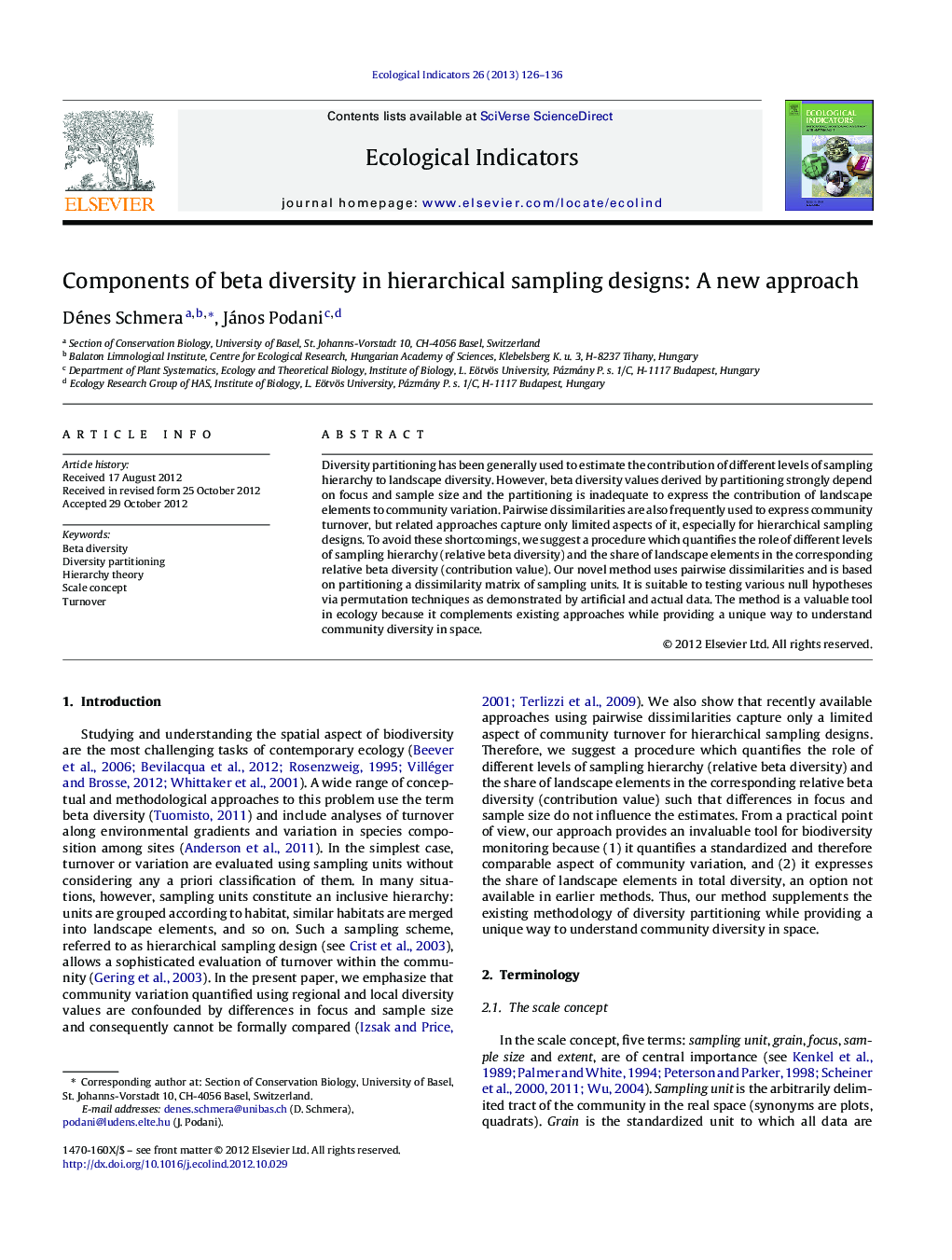| Article ID | Journal | Published Year | Pages | File Type |
|---|---|---|---|---|
| 4373570 | Ecological Indicators | 2013 | 11 Pages |
Diversity partitioning has been generally used to estimate the contribution of different levels of sampling hierarchy to landscape diversity. However, beta diversity values derived by partitioning strongly depend on focus and sample size and the partitioning is inadequate to express the contribution of landscape elements to community variation. Pairwise dissimilarities are also frequently used to express community turnover, but related approaches capture only limited aspects of it, especially for hierarchical sampling designs. To avoid these shortcomings, we suggest a procedure which quantifies the role of different levels of sampling hierarchy (relative beta diversity) and the share of landscape elements in the corresponding relative beta diversity (contribution value). Our novel method uses pairwise dissimilarities and is based on partitioning a dissimilarity matrix of sampling units. It is suitable to testing various null hypotheses via permutation techniques as demonstrated by artificial and actual data. The method is a valuable tool in ecology because it complements existing approaches while providing a unique way to understand community diversity in space.
► A method quantifying different aspects of community variation is proposed. ► We demonstrated its utility by examining artificial and actual data sets. ► Significance tests are possible via randomization models. ► It complements existing approaches to measure community variation.
